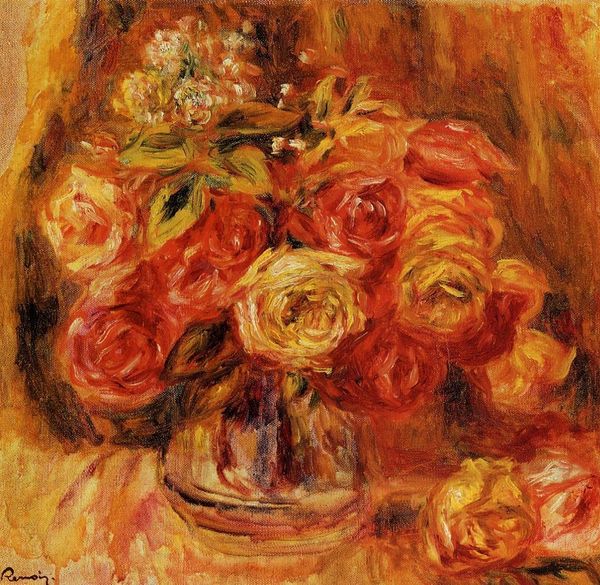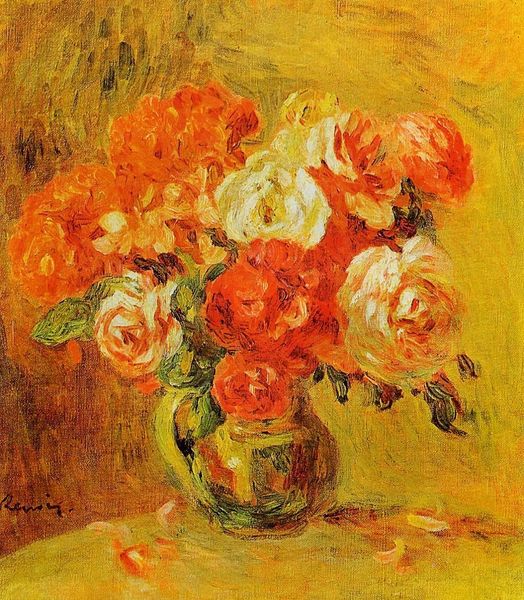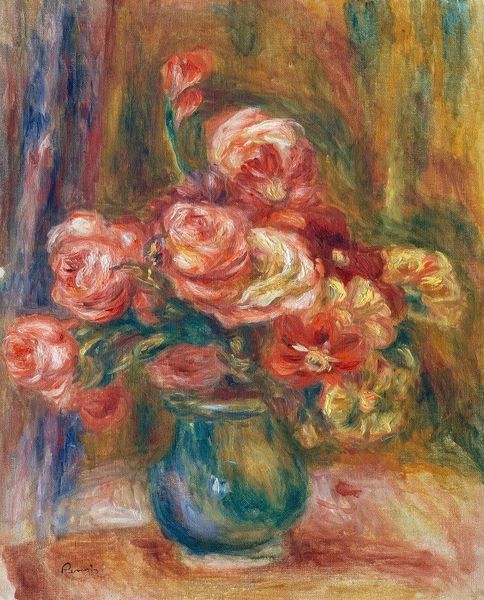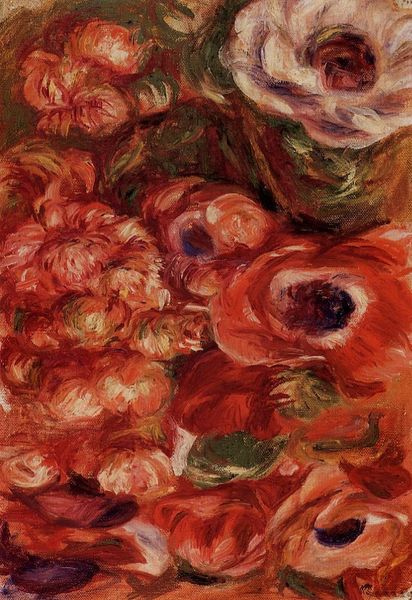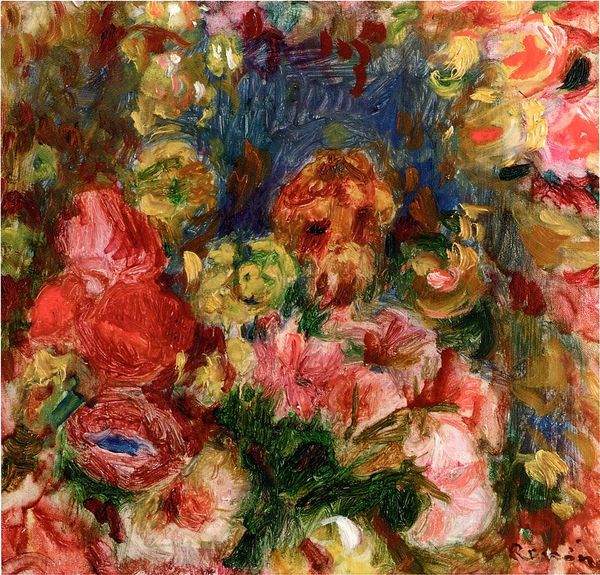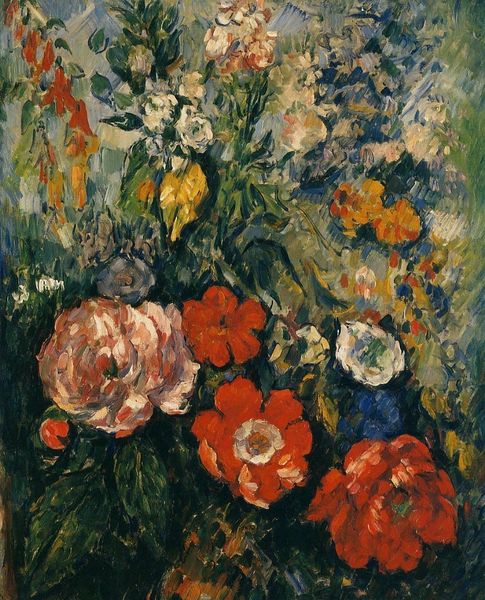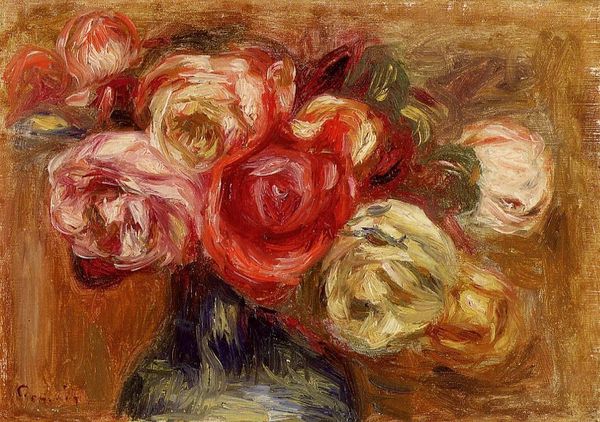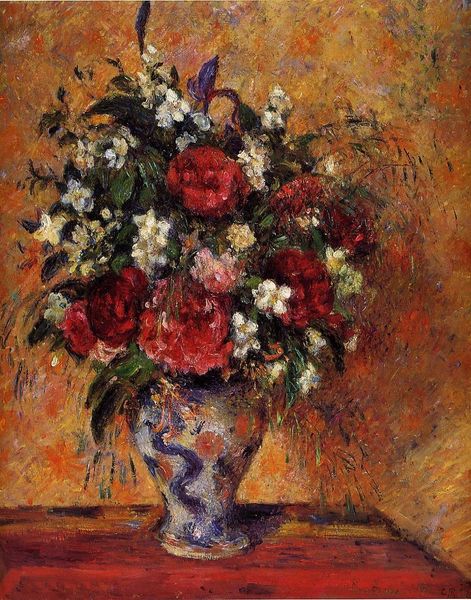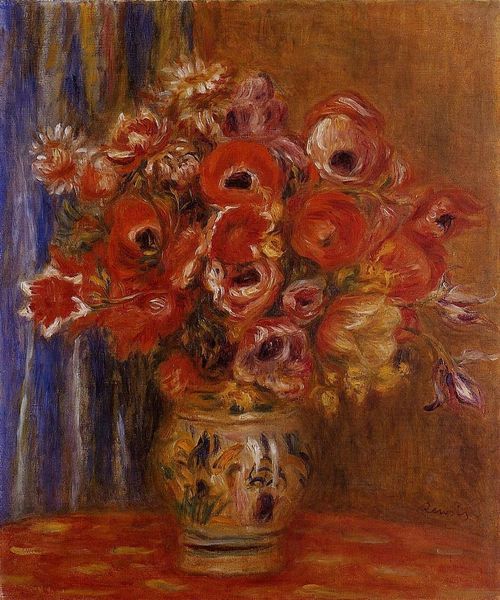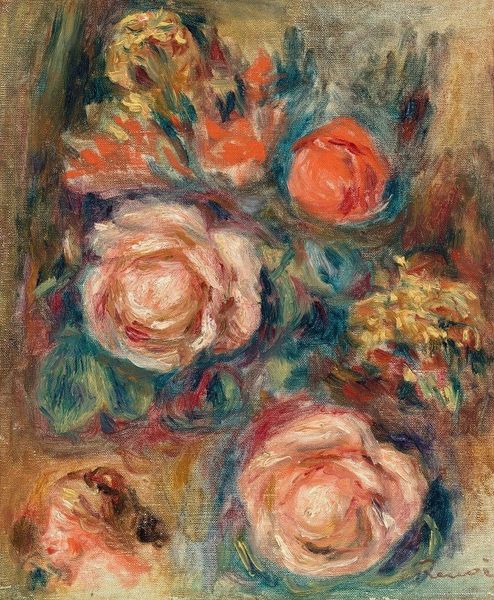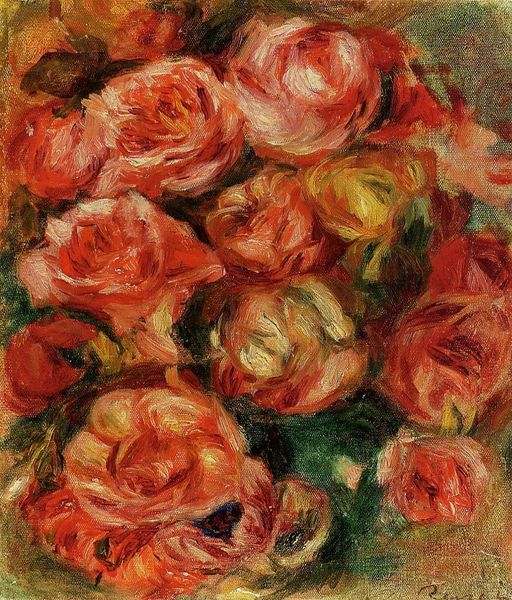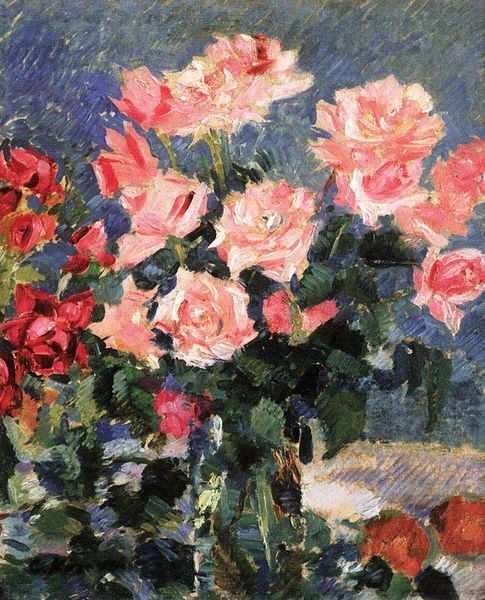
Copyright: Public domain
Pierre-Auguste Renoir’s “Roses”, housed here at the Musée d'Orsay, is a painting of contrasts and complements, rendered with oil on canvas. The profusion of reddish roses set against the dark background of the stems and leaves immediately captures our attention. Renoir's treatment of light and color here is where the real structural interest lies. The rapid, broken brushstrokes build up a visual field that suggests form without explicitly defining it. The roses themselves are not depicted with botanical accuracy; rather, they are rendered as clusters of color, their forms emerging from the interplay of light and shadow. This approach reflects the broader Impressionist project of capturing the fleeting effects of light and atmosphere, but Renoir pushes it further, towards a dissolution of form. The semiotic system at play here is one of suggestion rather than explicit representation. What the artist presents here challenges traditional notions of still life by focusing on sensation over accurate depiction. The painting invites us to contemplate the nature of perception, memory, and the aesthetic experience.
Comments
No comments
Be the first to comment and join the conversation on the ultimate creative platform.
